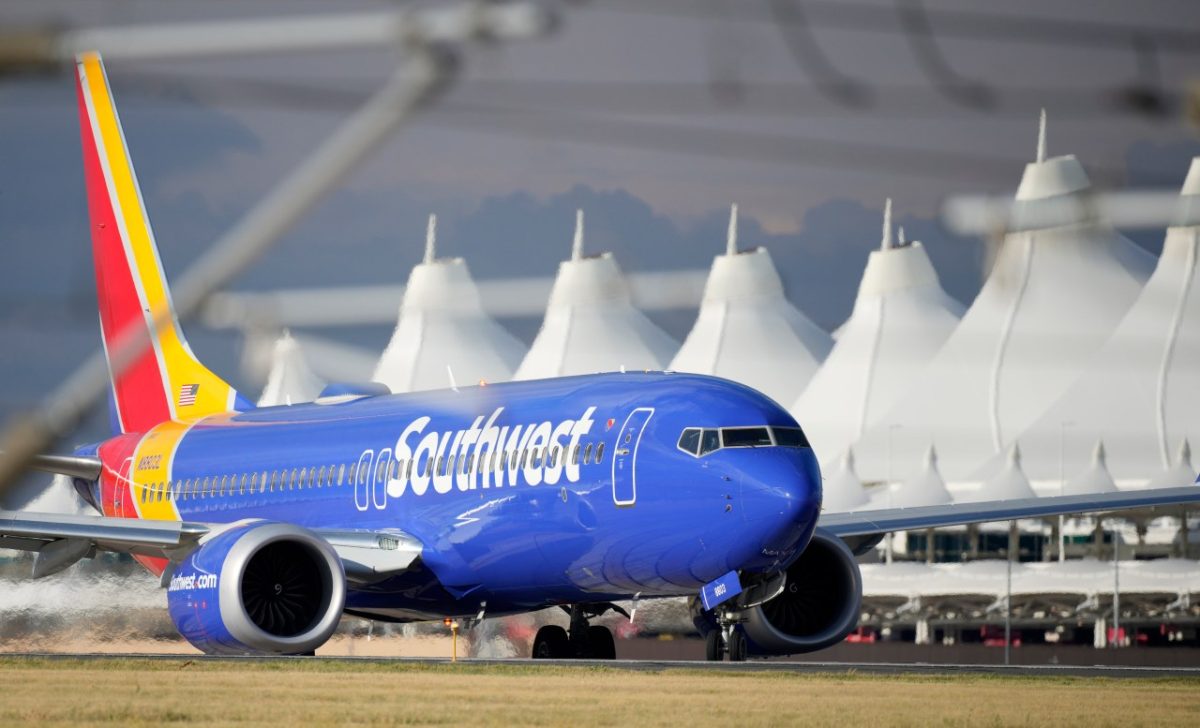Sitting in our weekly budget meeting before spring break, we joked about the plane mishaps, exchanging quips of “good luck” and various levels of concern, all knowing the majority of us would be boarding a plane within the week. It was about as serious as college students could muster on this final push before our planned trips — with as little seriousness as possible.
This was, in part, due to social media’s mix of concern and comedy regarding the Boeing 737 MAX debacle. The growing fear branched past the waves of turbulence to worries over a window or a door or, God forbid, an engine falling off the plane, forcing us into a rapid descent from the sky to the ground or ocean, whichever was under us to break our fall. Feeds were filled with videos of people on planes or on the ground, commenting on the rapidly rising hysteria surrounding the Boeing airplane “crisis.”
This trend started after Alaska Airlines Flight 1282 on Jan. 5, 2024, made headlines when a door plug covering an unused emergency exit door blew out, leaving a gaping hole in the fuselage of the aircraft, a Boeing 737 MAX 9. This occurred early into the flight from Portland, Ore., to Ontario, Calif., which departed at 4:52 p.m. and made its emergency landing back in Portland at 5:27 p.m. Thankfully, none of the 171 passengers or six crew members were injured, but videos from the flight showed dangling oxygen masks as the sky was visible from much more than just the usual tiny window.
While this dramatic of a malfunction does not happen often, issues regarding the maintenance of an aircraft do occur. Former Chairman of National Transportation Safety Board Robert Sumwalt commented on this, saying that these are not systemic problems, but rather issues that happen occasionally but often don’t get reported in the media. For instance, it was reported that United Airlines had eight incidents within a two-week period this past March: a lost tire, two hydraulic leaks, a hydraulic system issue, a maintenance issue, a missing external panel, a plane veering off the runway and a plastic wrap ingested and burned inside a plane engine. Out of these eight incidents, only five were on Boeing planes, and just three of those five were variations of the Boeing 737. Looking at usual media trends, the only one that might reach national headlines would be the one that veered off of the runway. Unfortunately, these incidents can happen on any plane, on any airline, at any time.
This isn’t the first time Boeing was in hot water regarding the 737 MAX. In January 2021, The Boeing Company reached a $2.5 billion legal settlement with the U.S. Department of Justice (DOJ), resolving criminal charges that Boeing conspired to defraud the Federal Aviation Administration (FAA). This stemmed from FAA Aircraft Evaluation Group’s (AEG) look into the Boeing 737 MAX following two fatal crashes of the aircraft which resulted in the deaths of 346 passengers: October 2018’s Lion Air Flight 610 and March 2019’s Ethiopian Airlines Flight 302. According to a DOJ press release from Jan. 7, 2021, Boeing admitted in court documents that they “deceived the FAA AEG about an important aircraft part called the Maneuvering Characteristics Augmentation System (MCAS) that impacted the flight control system of the Boeing 737 MAX,” causing a key document published by the FAA AEG to lack information about MCAS.
While many understand that there is a lot that goes into getting a plane ready to fly, the process itself is relatively unknown to the general public. Boeing gets many parts of their aircraft from outside suppliers, most often from Spirit AeroSystems for the Boeing 737 MAX, alongside other suppliers. (Note: this is not the same Spirit as Spirit Airlines.) At the Boeing factory, the plane is put together — electrical and hydraulic subsystems, wings and tail, landing gear and flight controls, engines, et cetera. The planes are sent out for testing by both Boeing and the airline the plane will eventually be sent to. Once approved, the airplane is sent to the airline customer, ready to enter their ranks with overbooked tickets and probably a screaming child on board.
Jumping back to the Alaska Airlines debacle, a lot went wrong in the production of this specific Boeing 737 MAX 9. Spirit AeroSystems built both the fuselage and the door plug that blew off the airplane mid-flight. However, when this specific door plug arrived at Boeing’s factory, it was found to have damaged and improperly installed rivets. Boeing removed the door plug for maintenance, but when reinstalled, at least three of the four plugs were not put back in place. Alaska Airlines apparently did not catch on to this mistake, as the aircraft was sent to fly and, well, you know what happened.
David P. Burns, acting assistant attorney general of the DOJ’s criminal division at the time of the $2.5 billion settlement, said the two Boeing employees being centered in the charges “chose the path of profit over candor” when they concealed information regarding the 737 MAX. Boeing whistleblower John Barnett, who was found dead on March 9, said something similar when he claimed that “under-pressure workers had been deliberately fitting sub-standard parts to aircraft on the production line.” According to the BBC, Barnett “had become concerned that the push to get new aircraft built meant the assembly process was rushed and safety was compromised, something the company denied.”
This is a classic case of quantity over quality, profit over safety, and it’s a tragedy that we continue to deal with internal issues such as this, especially when it can have serious, detrimental impacts on everyone involved. Boeing has shown that they would rather sell half-decent planes than delay their release in order to ensure the safety of the aircraft.
However, it is not completely correct to place all of the blame on Boeing. Once the aircraft reaches the airlines, it is up to the airlines to perform routine maintenance. In fact, Boeing does not technically have any role in the routine aircraft maintenance performed by airlines.
In regards to the Alaska Airlines incident, every single player involved is responsible. Spirit AeroSystems should have ensured that the fuselage and the door plug were made correctly. Boeing should have ensured that the door plug was fixed and put back into the fuselage properly, with the correct bolts attached. Alaska Airlines should have ensured that the aircraft was in perfect shape with all its working parts before sending people into the air.
The FAA oversees aircraft maintenance programs in the United States. However, the actual maintenance programs are the airline’s responsibility, and the airlines have to ensure that maintenance is done properly. Therefore, airlines should be doing more to ensure their routine maintenance checks actually serve a purpose, not just check a box. By investing in worthwhile routine maintenance, problems can be spotted before they become larger issues that would result in grounding the aircraft, or worse.
I have rarely feared for my life when flying. Sure, a little turbulence can make anyone jumpy, but overall, I had faith and trust in the aircraft. But that was before it became a publicized race to make the best new plane with the most space, the fastest speeds and the cheapest costs. Now, I think about plane crashes. I worry about the safety of my loved ones who fly often for work, whether they’re in the cockpit or a passenger seat. I get anxious on takeoff and landing, saying a quick prayer that the plane can withstand. The little girl who loved being in the right seat has been replaced with a woman who has seen too many news articles about the corruption and carelessness of manufacturers and airlines.
Profit can no longer be put over safety. Boeing, its suppliers and all of the airlines need to place the safety of their passengers and crew over their desperate need to increase their executives’ bank accounts. If the rising media attention has told us anything, it’s that it will get much harder for these companies to brush their mistakes under the rug.
Hannah Boring, FCRH ’25, is an English major from Annapolis, Md.










































































































































































































